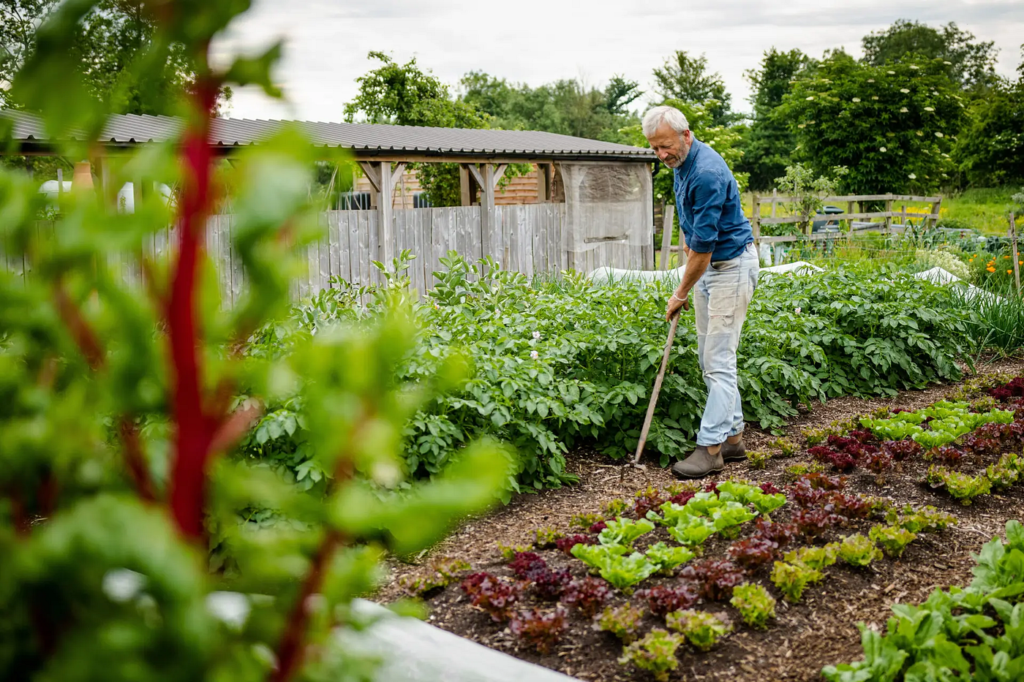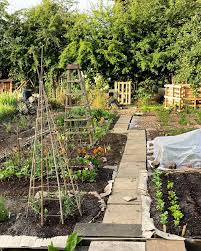By Georgia Lynn
Contributing Writer
Gardening often feels like a battle against relentless weeds, but what if there were a method that virtually eliminates weeding while improving soil health and plant growth? Enter No Dig Gardening—a transformative approach rooted in sustainable practices that make gardening easier, more productive, and environmentally friendly.
The Origins of No Dig Gardening
Although it feels revolutionary, the principles of No Dig gardening trace back centuries. Indigenous farming methods worldwide incorporated similar techniques, but the method gained modern prominence in the 20th century thanks to Ruth Stout and Charles Dowding.
- Ruth Stout: This American gardener and author introduced heavy mulching in her book “Gardening Without Work” (1961). She advocated layering organic materials like straw to suppress weeds and retain moisture, eliminating the need for traditional digging.
- Charles Dowding: A British horticulturist, Dowding modernized and popularized No Dig gardening. He demonstrated how compost mulch combined with weed-suppressing layers like cardboard can create thriving, low-maintenance gardens.
How No Dig Gardening Works
At its core, No Dig gardening focuses on preserving soil health by minimizing disturbance. The method creates a nutrient-rich environment where plants can flourish.
- Mulch Layer: Start with a thick layer of organic material such as compost, straw, or cardboard spread over the soil. This smothers weed seeds by blocking sunlight.
- Weed Suppression: With light effectively blocked, weeds struggle to grow. Any persistent weeds can be removed easily by hand.
- Moisture Retention: The mulch acts as a blanket, reducing evaporation and keeping the soil moist, which minimizes watering needs.
- Enhanced Soil Health: Beneath the mulch, soil microorganisms break down organic matter, enriching the soil and boosting plant growth.
- Minimal Disturbance: By avoiding tilling, the soil’s natural ecosystem thrives, resulting in healthier plants and higher yields.

Benefits of No Dig Gardening
This method offers a host of advantages for gardeners at every skill level:
- Drastically Reduced Weeding: The mulch layer suppresses weeds, saving hours of labor.
- Improved Soil Fertility: Healthier soil leads to robust plant growth and abundant harvests.
- Water Efficiency: Mulch conserves moisture, reducing the frequency and volume of watering.
- Higher Yields: Less competition from weeds allows crops to flourish.
- Eco-Friendly: By minimizing soil disturbance, No Dig gardening prevents erosion and fosters sustainability.
How to Start a No Dig Garden
Transforming your garden into a No Dig oasis is straightforward:
- Choose a Plot: Pick a sunny area—either an existing garden bed or a new spot.
- Smother Existing Growth: Lay down cardboard or thick newspaper over grass or weeds to suppress existing vegetation.
- Add Mulch: Spread 4-6 inches of organic mulch like compost or straw over the covered area.
- Water Well: Thoroughly moisten the mulch layer to activate decomposition and attract soil organisms.
- Plant Directly: Make small holes or furrows in the mulch for seeds or seedlings.
- Maintain Mulch: Replenish the mulch as needed to keep weeds at bay and conserve moisture.
Enjoy the Rewards
With No Dig gardening, you’ll spend less time weeding and watering and more time enjoying the beauty and productivity of your garden. This sustainable technique not only simplifies gardening but also nurtures the earth beneath our feet.
Start your No Dig garden today and experience the joy of effortless, thriving greenery!
This rewrite aims to educate, engage, and inspire readers, presenting the technique as both approachable and transformative.
